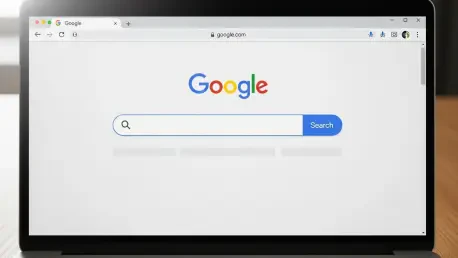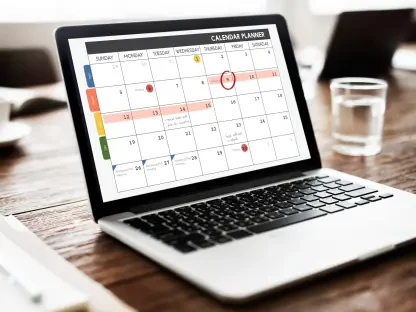Dive into the world of digital advertising with Anastasia Braitsik, a globally recognized leader in SEO, content marketing, and data analytics. With her extensive expertise in navigating the ever-evolving landscape of online marketing tools, Anastasia offers invaluable insights into Google’s recent announcement about transitioning the Google Ads API to a monthly release cycle starting in 2026. In this engaging conversation, we explore the motivations behind this shift, the impact on developers, the specifics of the new release timeline, and how these changes aim to streamline campaign management with more frequent updates and features.
What inspired Google to transition the Google Ads API to a monthly release cycle starting in 2026?
The move to a monthly release cycle is really about keeping pace with the fast-moving digital advertising world. From what I understand, Google recognized that the previous schedule of fewer major releases wasn’t delivering updates quickly enough to meet the needs of developers and advertisers. This new approach allows for more consistent rollouts of features and fixes, ensuring that users can adapt to changes in real time. It’s also a way to reduce the pressure of massive updates by spreading them out, making it easier for everyone to stay current.
How does this shift to more frequent releases benefit developers and users of the API?
For developers, this is a game-changer because it means they get access to new functionalities and improvements more often without waiting months for a big release. It helps them iterate faster on their tools and integrations. For users managing campaigns, it translates to having cutting-edge features at their fingertips sooner, which can directly impact campaign performance. Think of it as getting small, actionable updates rather than an overwhelming overhaul—it’s less disruptive and more manageable.
Can you break down the main differences between the old release schedule and this new monthly cycle for the Google Ads API?
Absolutely. The old schedule typically had three major releases per year, which meant longer gaps between significant updates. Now, with the new cycle in 2026, we’re looking at four major releases annually, plus several minor ones sprinkled throughout. Major releases will still bring substantial changes, while minor releases focus on incremental, non-breaking updates. This balance ensures developers aren’t hit with constant overhauls but still get regular enhancements to work with.
How will increasing the number of major releases from three to four per year impact developers’ workflows?
Having an extra major release each year means developers will need to plan for more frequent integration updates, but it also reduces the scope of each update. Instead of dealing with a huge batch of changes every few months, they’ll handle smaller, more digestible shifts. It might require a bit more attention to release notes and testing, but overall, it should minimize disruption and allow for smoother transitions in their development cycles.
What can you tell us about the role of minor releases in this new schedule and the types of updates they’ll include?
Minor releases are going to be the unsung heroes here. They’re designed to introduce incremental features and fixes without breaking existing setups. Think of them as fine-tuning—adding small enhancements or addressing bugs that don’t require a full overhaul of your system. This approach lets developers adopt new capabilities at a steady pace without the stress of reworking everything each time a minor version drops.
Can you walk us through the planned major and minor releases for the Google Ads API in 2026 based on the announced timeline?
Sure, the 2026 timeline is pretty packed. It kicks off with a major release, V23, in January, followed by minor updates like V23_1 in February and V23_2 in March. Then we see V24 as a major release in April, with minors in May and June. The pattern continues with V25 in July and V26 in October, each accompanied by their own minor releases. Each major version is slated to be active for about a year before sunset, giving developers a clear window to adapt and migrate.
Why do some versions, like V23 and V24, have different sunset dates, and how does Google determine these timelines?
The varying sunset dates, such as V23 sunsetting in February 2027 and V24 in May 2027, are largely about giving developers a predictable lifecycle for each version—roughly a year from launch. Google likely bases these timelines on usage data, the complexity of updates, and feedback from the developer community. It’s a balancing act to ensure enough time for migration while pushing forward with newer, more efficient versions to keep the API robust and secure.
Google mentioned adjusting sunset schedules to avoid extra version migrations. How does this help reduce the burden on API developers?
This adjustment is all about minimizing headaches for developers. By aligning sunset dates to avoid overlapping or rushed transitions, Google ensures that developers aren’t forced to jump between multiple versions in a short span. It’s a more streamlined approach, giving them a clear path to upgrade without the chaos of juggling several migrations at once. Essentially, it cuts down on redundant work and lets them focus on optimizing their tools.
What details can you share about the sunset schedule for older versions like V19 through V22 in 2026, and why are they phased out at different times?
The sunset schedule for older versions is staggered throughout 2026—V19 in February, V20 in June, V21 in August, and V22 in October. This spacing is intentional to avoid overloading developers with simultaneous cutoffs. It reflects a thoughtful rollout based on how widely each version is used and how long it’s been active. Older versions like V19 have likely been around longer and have fewer active users, so they’re retired earlier, while newer ones get a bit more time for transition.
Since the 2026 release and sunset dates are estimates, how can developers prepare for potential shifts in the schedule?
Flexibility is key here. Developers should build some buffer time into their planning and not wait until the last minute to migrate or update. Staying plugged into Google’s communication channels—like their developer blogs or forums—is crucial for real-time updates on any date changes. Also, regularly testing integrations with beta versions or release candidates can help them stay ahead of the curve if timelines shift unexpectedly.
What is your forecast for how this monthly release cycle will shape the future of digital advertising through the Google Ads API?
I’m optimistic that this monthly cycle will push digital advertising into a more dynamic space. With updates rolling out more frequently, we’ll likely see faster innovation in campaign management tools, more responsive features tailored to market trends, and a tighter feedback loop between advertisers and Google. It could redefine how quickly strategies evolve, giving businesses an edge in adapting to consumer behavior. Over time, I expect this to set a new standard for how APIs in our industry deliver value.









